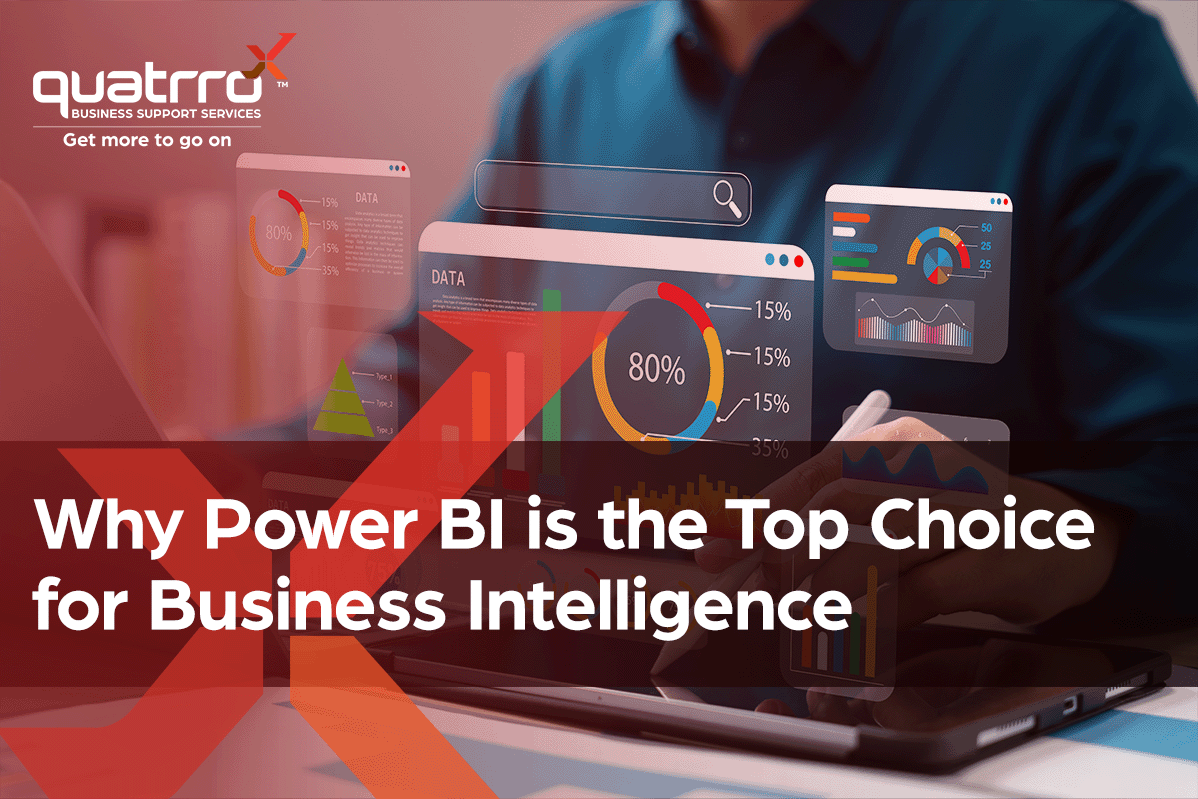Blog Details
Why Power BI is the Top Choice for Business Intelligence
June 25, 2025

The Rise of Power BI in Business Intelligence
In the dynamic realm of business intelligence (BI), Power BI has emerged as a frontrunner for companies seeking to harness the power of their data. As organizations increasingly recognize the need to transform raw data into actionable insights and become more data-driven, the demand for effective BI tools has surged. Power BI, a product of Microsoft, has become a preferred choice due to its comprehensive features and user-friendly interface.
Power BI's prominence can be attributed to its early entry into the BI market and its continuous evolution to meet the needs of modern businesses. Microsoft has invested significantly in improving Power BI, ensuring it remains at the forefront of BI innovation. Its reputation is further solidified by consistent recognition in Gartner's Magic Quadrant for Analytics and BI Platforms, where it shares the spotlight with other leading tools like Tableau.
Companies ranging from mid-sized enterprises to large corporations and private equity groups have adopted Power BI to streamline their analytics processes. Its widespread adoption across diverse industries underscores its versatility and effectiveness in transforming data into strategic assets. As businesses strive to stay competitive, Power BI’s robust capabilities provide a compelling solution to meet their growing data needs.
Cost-Effectiveness: A Key Advantage of Power BI
One of the most compelling reasons businesses choose Power BI is its cost-effectiveness. In an era where financial prudence is paramount, Power BI offers a budget-friendly option without compromising on features. The low incremental cost of enabling Power BI is particularly appealing to organizations that already use Microsoft Office 365.
For companies with existing Office 365 licenses, turning on Power BI is a straightforward process with minimal additional expenses. This eliminates the need for significant upfront investments that are typically associated with other BI tools. By leveraging existing infrastructure, businesses can efficiently integrate Power BI into their operations, making it an attractive choice for budget-conscious organizations.
Moreover, Power BI’s pricing model is scalable, catering to businesses of all sizes. Whether a company is just starting its BI journey or is already managing complex analytical requirements,Power BI offers plans that align with varying needs and budgets. This flexibility ensures that businesses can expand their use of Power BI as their data demands grow, providing a long-term,cost-effective solution.
Seamless Integration with Microsoft Office 365
Power BI’s seamless integration with Microsoft Office 365 is a significant advantage for organizations already using Microsoft's suite of productivity tools. This integration allows for a smooth transition and easy adoption of Power BI within existing workflows, minimizing disruptions and enhancing efficiency.
The synergy between Power BI and Office 365 enables users to leverage familiar applications like Excel, SharePoint, and Teams to enrich their BI experience. Data can be easily imported from Excel into Power BI, facilitating the creation of interactive reports and dashboards. This compatibility ensures that users can capitalize on their existing skills and resources, making the adoption of Power BI less daunting.
Moreover, the integration extends to cloud-based services, allowing for real-time collaboration and data sharing. Teams can work together seamlessly, accessing and analyzing data from any location, which enhances decision-making processes. This interconnected ecosystem not only streamlines operations but also empowers organizations to derive actionable insights from their data swiftly.
Robust Support and a Thriving User Community
A vital aspect of Power BI’s success is the robust support system and vibrant user community that surrounds it. Microsoft continually enhances Power BI with regular updates and new features,ensuring that users have access to cutting-edge tools. This commitment to improvement is accompanied by comprehensive support resources that assist businesses in maximizing the platform’s potential.
The Power BI community is a valuable asset for users seeking guidance and solutions. With a wealth of online resources, including forums, tutorials, and user groups, individuals can easily find answers to their queries and share best practices. This extensive network of support fosters collaboration and knowledge sharing, empowering users to tackle complex BI challenges effectively.
Furthermore, the availability of third-party experts and consultants specializing in Power BI provides additional support options for businesses. These professionals offer tailored solutions and strategic insights to optimize Power BI implementations, ensuring that companies extract maximum value from their data.
Overcoming Data Misconceptions with Power BI
In the modern business landscape, data is often lauded as an invaluable asset. However, a common misconception is that data inherently provides value without any further processing. Power BI challenges this notion by emphasizing the importance of transforming data into meaningful insights that drive business success.
Power BI equips organizations with the tools needed to convert raw data into actionable intelligence. By facilitating data visualization and analysis, Power BI helps businesses identify trends, uncover opportunities, and make informed decisions. This shift in perspective encourages organizations to view data not just as a static asset but as a dynamic resource that requires strategic utilization.
The platform’s intuitive interface and advanced analytical capabilities enable users to explore data in depth, uncovering valuable insights that were previously hidden. By promoting a data-driven culture,Power BI empowers businesses to align their data strategies with corporate objectives, ultimately enhancing operational efficiency and competitiveness.
Transitioning from Excel to Power BI
For many organizations, Excel remains a staple tool for data analysis and reporting. However, as data complexity increases, Excel’s limitations become apparent. Power BI offers a natural progression for Excel users, enabling them to transition smoothly to a more advanced BI platform without losing familiarity.
The learning curve for Power BI is minimal for those already proficient in Excel. Users can leverage their existing skills, such as creating visuals and using formulas, to build sophisticated reports and dashboards in Power BI. This continuity ensures that users can quickly adapt to the new platform and harness its full potential.
Additionally, Power BI’s powerful data modelling capabilities surpass those of Excel, providing users with enhanced analytical tools. The ability to connect to multiple data sources, apply data transformations, build fast, interactive visualizations, perform complex calculations, and scale reporting, all in a low-code environment, makes Power BI a superior choice for businesses seeking to elevate their data analysis capabilities.
In conclusion, Power BI’s cost-effectiveness, seamless integration with Office 365, robust support, and ability to transform data into actionable insights make it a preferred choice for businesses looking to enhance their BI strategies. As organizations continue to navigate the data-driven landscape, Power BI stands out as a versatile and powerful tool that meets the evolving needs of modern enterprises.








